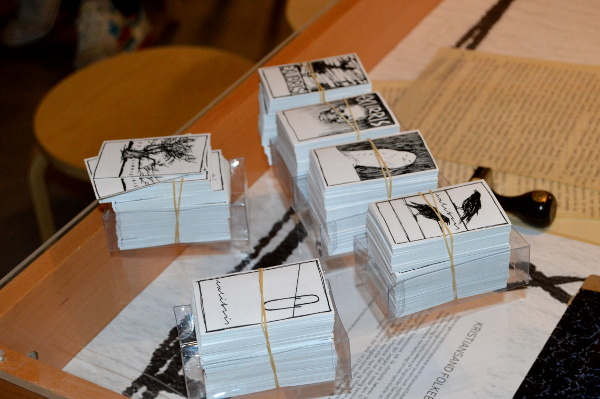The new education program will reach the schools in Norway!
Published on 23 May 2017
The educational program “Who rules our thoughts? Literature and books during the second world war” is chosen to become part of the offer to upper secondary schools in the county of Vest-Agder. Through the "cultural school bag", schools are given the opportunity to choose between different teaching programs linked to the curriculum.
Stiftelsen Arkivet offers schools to come to the Arkivet to learn about what happened during the second world war and how important freedom of speech is in today's society.
We believe it is by interacting and taking different positions that it is possible to learn from history. In the end of the session each student can choose their own Ex-Libris stamp to post in their favourite book.

Educational program
Imagine if you were visiting your local library and the book you were looking for was removed from the shelves. The librarian tells you that reading it is now prohibited.
The films at the cinema are replaced with new films that you have never heard of, with unknown actors. There are other voices than those you are accustomed to hearing on the radio, and newspapers have different headers.
The museum of art in your city has taken down the pictures that had previously hung there. They are now prohibited and new art is hung up in their place.
This happened in Europe from 1933 to 1945.
What thoughts and ideas were prohibited? And what groups of people were persecuted and in danger of extermination?
This is the first text that meets the users of this education program. When we developed the educational program, it was important to us that students themselves should think through different aspects of the history of confiscation of books. We have chosen this perspective to the history, to show that history is reflected by the decisions taken by persons.
We present five persons to the students. These persons had different roles relating to the history of confiscated books:
- the heroic librarian Reidunn Johnsen;
- the eager women’s rights activist Rosa Manus;
- the fanatical anti-freemason Eugene Nilsen;
- the quick-witted coal industry family Ignatz Petschek;
- and the champion of the European Jewish cultural heritage Lucy Dawidowicz.
We divide the class into five groups and each group is assigned its person.
For each of these persons, students must take a position on a matter. Most often it is not only one correct answer, but it could be several things that play into why the person acted as it did. Through discussion and reflection, the students find an answer to present before the class.